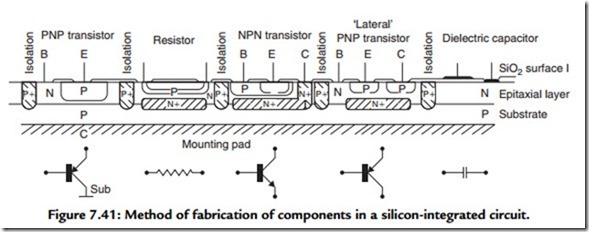Performance Standards
It has always been accepted in the past, and is still held as axiomatic among a very large section of the engineering community, that performance characteristics can be measured and that improved levels of measured performance will correlate precisely, within the ability of the ear to detect such small differences, with improvements that the listener will hear in reproduced sound quality.
Within a strictly engineering context, it is difficult to do anything other than accept the concept that measured improvements in performance are the only things that should concern the designer.
However, the frequently repeated claim by journalists and reviewers working for periodicals in the hi-fi field—who, admittedly, are unlikely to be unbiased witnesses— that measured improvements in performance do not always go hand in hand with the impressions that the listener may form, tends to undermine the confidence of the circuit designer that the instrumentally determined performance parameters are all that matter.
It is clear that it is essential for engineering progress that circuit design improvements must be sought that lead to measurable performance improvements. However, there is now also the more difficult criterion that those things that appear to be better, in respect to measured parameters, must also be seen, or heard, to be better.
Use of ICs
This point is particularly relevant to the question of whether, in very high-quality audio equipment, it is acceptable to use IC operational amplifiers, such as the TL071, or some
of the even more exotic later developments such as the NE5534 or the OP27, as the basic gain blocks, around which the passive circuitry can be arranged, or whether, as some designers believe, it is preferable to construct such gain blocks entirely from discrete components.
Some years ago, there was a valid technical justification for this reluctance to use op-amp ICs in high-quality audio circuitry, as the method of construction of such ICs was as shown, schematically, in Figure 7.41, in which all the structural components were formed on the surface of a heavily ‘P’ doped silicon substrate, and relied for their isolation from one another or from the common substrate on the reverse-biased diodes formed between these elements.
This led to a relatively high residual background noise level, in comparison with discrete component circuitry, due to the effects of the multiplicity of reverse diode leakage currents associated with every component on the chip. Additionally, there were quality constraints in respect to the components formed on the chip surface—more severe for some component types than for others—that also impaired the circuit performance.
A particular instance of this problem arose in the case of PNP transistors used in normal ICs, where the circuit layout did not allow these to be formed with the substrate acting as the collector junction. In this case, it was necessary to employ the type of construction known as a “lateral PNP,” in which all the junctions are diffused in, from the exposed chip surface, side by side.
In this type of device the width of the ‘N’ type base region, which must be very small for optimum results, depends mainly on the precision with which the various diffusion
masking layers can be applied. The results are seldom very satisfactory. Such a lateral PNP device has a very poor current gain and HF performance.
In recent IC designs, considerable ingenuity has been shown in the choice of circuit layout to avoid the need to employ such unsatisfactory components in areas where their shortcomings would affect the end result. Substantial improvements, both in the purity of the base materials and in diffusion technology, have allowed the inherent noise background to be reduced to a level where it is no longer of practical concern.
Modern Standards
The standard of performance that is now obtainable in audio applications, from some of the recent IC op–amps, especially at relatively low closed-loop gain levels, is frequently of the same order as that of the best discrete component designs, but with considerable advantages in other respects, such as cost, reliability, and small size.
This has led to their increasing acceptance as practical gain blocks, even in very high- quality audio equipment.
When blanket criticism is made of the use of ICs in audio circuitry, it should be remembered that the 741, which was one of the earliest of these ICs to offer a satisfactory performance—although it is outclassed by more recent types—has been adopted with enthusiasm, as a universal gain block, for the signal handling chains in many recording and broadcasting studios.
This implies that the bulk of the program signals employed by the critics to judge whether or not a discrete component circuit is better than that using an IC will already have passed through a sizeable handful of 741-based circuit blocks, and if such ICs introduce audible defects, then their reference source is already suspect.
It is difficult to stipulate the level of performance that will be adequate in a high-quality audio installation. This arises partly because there is little agreement between engineers and circuit designers, on the one hand, and the hi-fi fraternity, on the other hand, about the characteristics that should be sought and partly because of the wide differences that exist between listeners in their expectations for sound quality or their sensitivity to distortions. These differences combine to make it a difficult and speculative task to attempt either to quantify or to specify the technical components of audio quality or to establish an acceptable minimum-quality level.
Because of this uncertainty, the designer of equipment in which price is not a major consideration will normally seek to attain standards substantially in excess of those that he supposes to be necessary, simply in order not to fall short. This means that the reason for the small residual differences in the sound quality, as between high-quality units, is the existence of malfunctions of types that are not currently known or measured.
